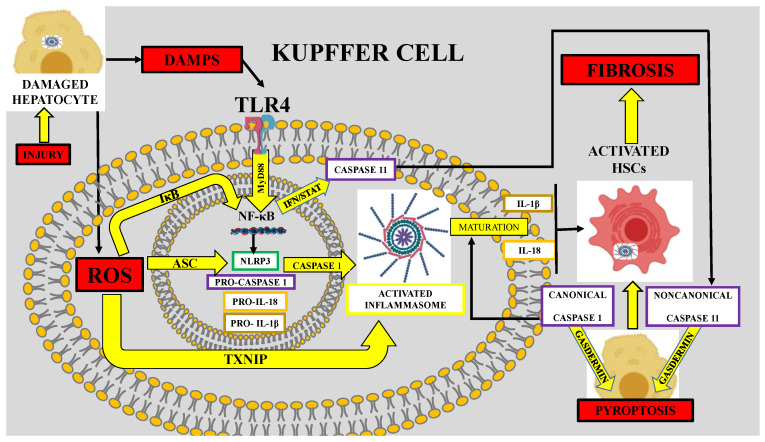Figure 3.
Reactive oxygen species (ROS) trigger fibrosis via several inflammatory pathways. Alcohol, viruses, or other toxic stimuli may injure hepatocytes, which release ROS and damage-associated molecular patterns (DAMPs) that bind to Toll-like receptor 4 (TLR4) in Kupffer cells. Then, the TLR4/MyD88 pathway activates nuclear factor-κB (NF-κB), which triggers the inflammatory response by promoting the transcription of the nucleotide-binding oligomerization domain (NOD)-like receptor protein 3 (NLRP3), pro-caspase-1, pro-IL-18, and pro-IL-1β. NLRP3 induces the maturation of caspase 1, which in turn triggers inflammasome activation mediated by ROS and apoptosis-associated speck-like protein containing a caspase recruitment domain (ASC); inflammasome activation induces the maturation of IL-1β and IL-18, which promote the activation of hepatic stellate cells (HSCs). ROS can activate the inflammasome through the thioredoxin-interacting protein (TXNIP) signaling pathway. NF-κB may promote caspase 11 upregulation via the IFN/STAT pathway. Caspase 1 and caspase 11 can induce pyroptosis via gasdermin by canonical or noncanonical pathways, respectively. Pyroptosis induces the activation of HSCs. ROS may promote NF-κB activation via the dissociation of the inhibitory factor IκB. Importantly, the activation of HSCs by any mechanism results in liver fibrosis.

